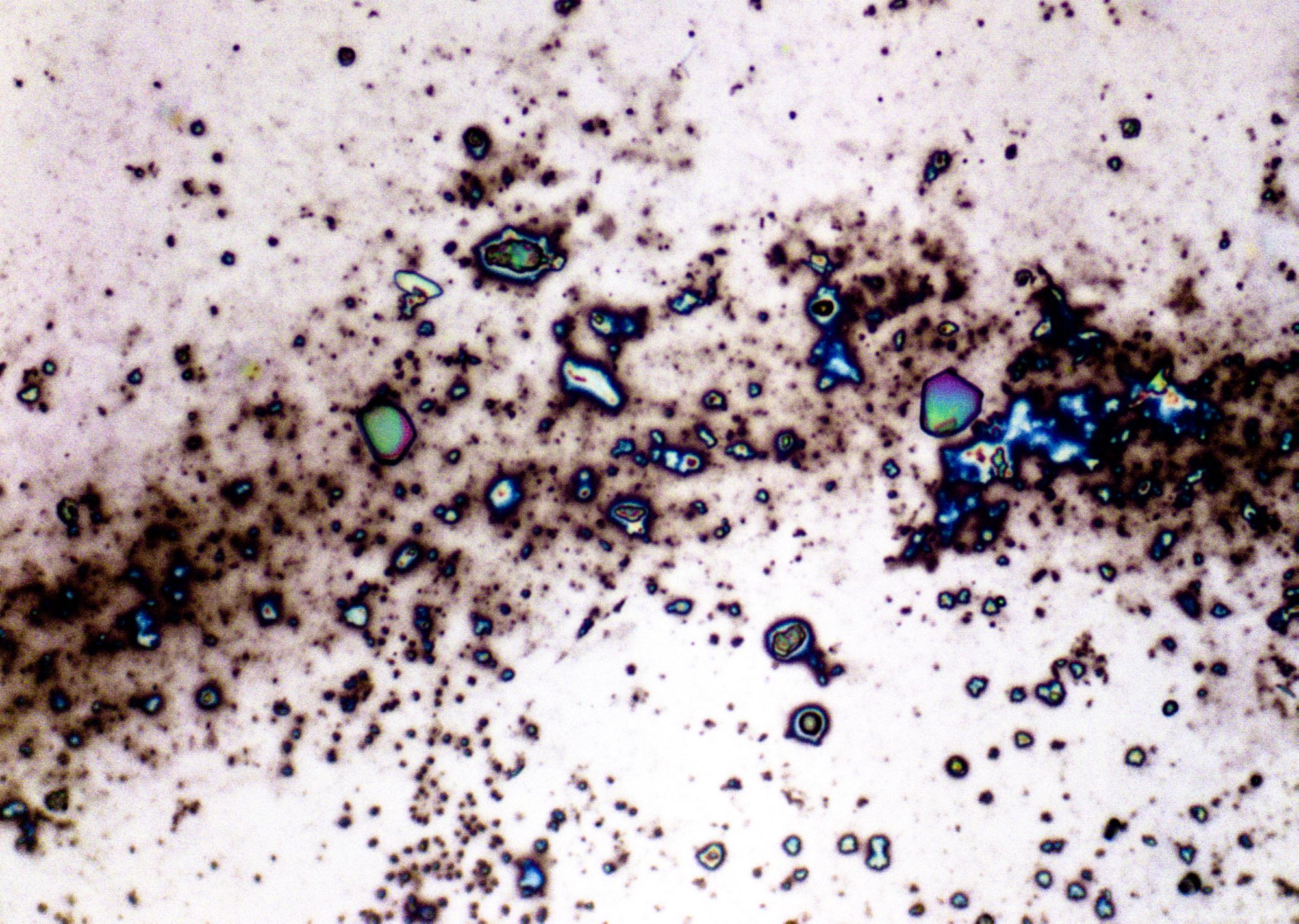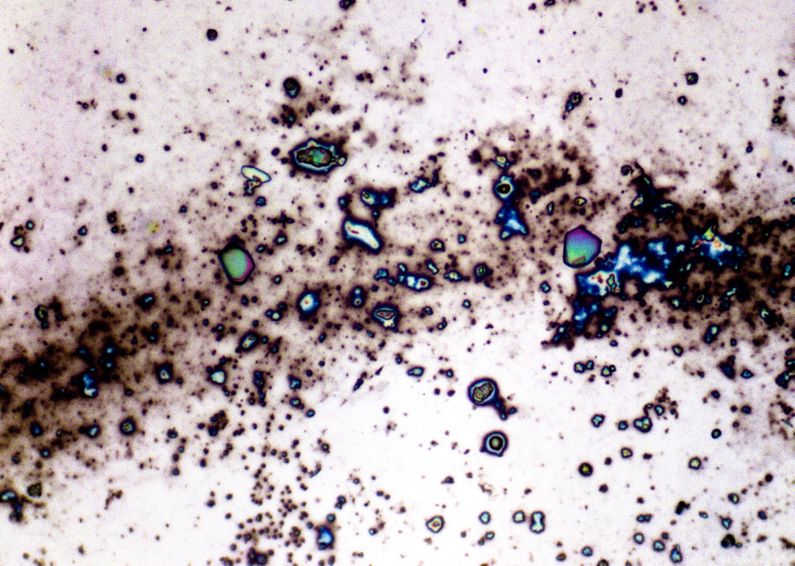(Untitled)

Like little colorful jewels, these microscopic spots of color are probably the remnants of a thin coating that once covered this sample. The spots get their color not from the usual pigments or dyes that color things like flower petals and paint, but from another phenomenon, called structural color, which causes the rainbow colors of opals, soap bubbles, and CDs.
With both pigment-based and structural color, you see color when something selectively absorb some of the light that hits it, sending only some colors back to your eyes. In pigment-based color, that absorption is a property of whatever that something is made of. If you ground up a pigment to a powder, it would still be whatever color it was, because its molecules haven’t changed their ability to absorb light. For structural color, however, the material is usually transparent (such as the soapy water of a soap bubble). Instead, the color is caused by waves of light interfering with each other as they bounce off of different surfaces within the material - such as the outer and inner surface of a bubble. If you grind up a material whose color is structural, such as, for example, a soap bubble, the color will disappear.


